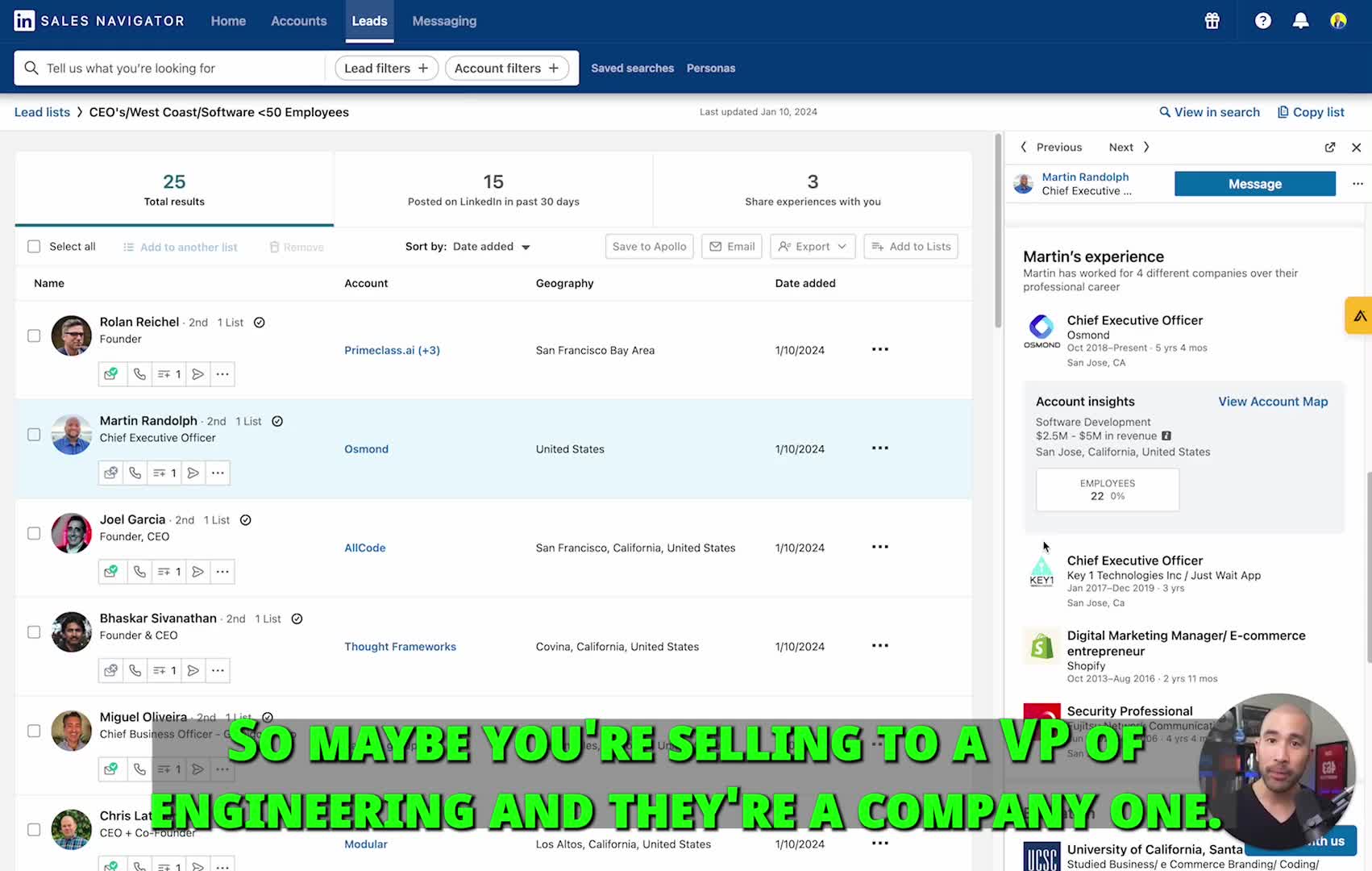Relationship Marketing
Why is traditional B2B LinkedIn outreach failing and what approach actually works?
Traditional LinkedIn outreach is failing because 99% of B2B messages use generic cold pitches that people automatically ignore or delete. These tactics only target the 3% of prospects actively seeking solutions. Instead, successful businesses are using a micro-engagement strategy focused on positioning rather than pitching. This approach involves getting on prospects' radar before messaging them, optimizing profiles for instant credibility, and asking strategic questions instead of selling immediately. By engaging with prospects' content first and providing value, businesses build authority and trust, making prospects come to them rather than chasing leads. This strategy transforms cold outreach into warm conversations with response rates exceeding 50%.
Watch clip answer (19:53m)Why do some LinkedIn messages get instant replies while others are ignored?
LinkedIn messages get better responses when you understand the platform's indicators and use psychology effectively. The green circles in your inbox provide crucial information - hollow green means the person has mobile push notifications on, while solid green indicates they're currently online. By prioritizing messages to people who are active, your response rate can triple overnight. Using audio messages creates intrigue like a mysteriously wrapped present, making people eager to respond. The technique makes connections feel seen and respected, which significantly increases engagement rates compared to the common approach of random messaging.
Watch clip answer (04:28m)What is the purpose of networking on LinkedIn?
LinkedIn is fundamentally about building relationships that drive results. People hire people and give others business opportunities through the connections made on the platform. This relationship-building is the core reason for developing a personal brand on LinkedIn. Effective networking can be achieved through multiple approaches: direct messaging, commenting on people's posts, or taking conversations off the platform. The most valuable connections often develop when interactions move beyond LinkedIn to actual conversations, fostering true relationships that lead to tangible business outcomes.
Watch clip answer (00:56m)What is the 90-day framework for building relationships on LinkedIn?
Morgan J. Ingram outlines a strategic 90-day framework for building meaningful relationships on LinkedIn. The first 30 days focus on consistent engagement with potential connections' content - commenting, liking, and staying top-of-mind through quality interactions rather than asking for favors too soon. The second 30 days involve starting meaningful conversations about topics your connections are engaging with. This doesn't mean immediately jumping into direct messages requesting meetings, but rather asking relevant questions about their content to deepen the relationship naturally. In the final 30 days, you can explore opportunities for collaboration, meetings, or other valuable interactions once you've established trust. This patient approach leads to more genuine relationships that could connect you to potential clients, even if the person themselves isn't a direct prospect.
Watch clip answer (02:29m)Is LinkedIn Sales Navigator worth the investment for B2B sales professionals?
LinkedIn Sales Navigator is definitely worth the investment for B2B sales professionals. According to the expert, it costs under $100 per month and provides significant value, especially when closing B2B deals. Just one successful deal can easily recoup the monthly subscription cost. The platform offers powerful features like account mapping, lead list building, and customized alerts that notify you of important trigger events such as job changes, company news, and profile views. These features help sales professionals build targeted prospect lists, maintain engagement with leads, and identify optimal times to reach out, ultimately improving conversion rates and sales efficiency.
Watch clip answer (07:12m)What is Account-Based Marketing (ABM) and how does it differ from demand generation?
Account-Based Marketing (ABM) is a targeted strategy that identifies high-value accounts and engages their buying teams with personalized marketing content and communications tailored to their needs. The goal is to increase sales, revenue and ROI by focusing on specific accounts rather than casting a wide net. ABM stands in contrast to demand generation, which is an older, broader approach that collects leads using advertising to foster general interest. While demand generation casts a wider net to find leads quickly, ABM is inherently slower and more expensive but more targeted - often described as 'fishing with spears versus fishing with nets.' ABM fundamentally brings marketing personnel into the sales process, requiring collaboration between sales and marketing teams.
Watch clip answer (04:35m)




